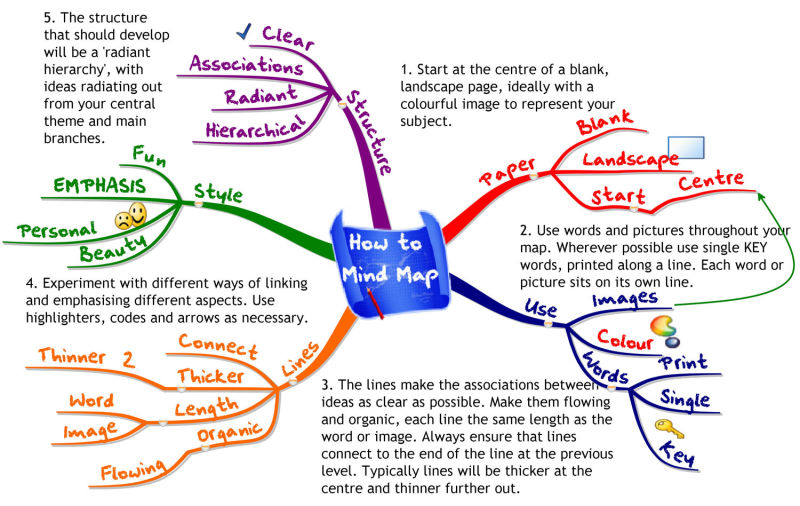People have been using their mind maps for more than 40 years. Tony Buzan, a renowned UK consultant and researcher, presented the concept of mindmap in his book, Use Your Head in 1972. Initially, the concept was mainly to facilitate notes taking and idea capturing. Since then, the concept has been improved and popularized among businesses. Today, many business managers create and use visual maps to plan projects and structure their ideas.

What is a Mindmap?
Mindmap is a data visualization technique to graphically establish connections between several ideas or pieces of information. This technique involves writing down each idea and then linking this idea to other related pieces by lines or curves. This results in a web of relationships. By analyzing & shifting these relationships, the consultant can figure out the best course of action & the expected outcomes. Using mind maps, consultants can capture, classify, analyze and visualize complex ideas and concepts.
All mindmaps have some commonalities. They have a natural organizational structure that radiates from the center and use lines, symbols, words, color and images according to simple, brain-friendly concepts. Hence, mind mapping converts monotonous information into colorful, memorable & highly organized diagram that is in-line with brain’s natural workings.
Application examples
For example, a you can visualize clients’ purchase process by creating a sales funnel mind map that identifies the factors that impact lead generation, conversion and revenues. You can capture any assumptions, quotes, estimates, recommendations, guidelines, and other ideas that emerged from workshops & visually summarize this information. Team members and leaders can collaborate enrich the Mind Maps by adding notes, records and other important details. With Mind Mapping software, such as FreeMind, you can create mind maps and pictures with a few mouse clicks. You can also decompose complex activities into smaller linked maps that you can filter, sort and group.
Using a mind map as a visual communication tool, you can break down even complex processes right in front of your client’s eyes and help them see how things are connected. You can outline strategic goals as well as the steps needed to get there. By presenting everything visually that’s easy to comprehend, you can actively engage non-technical project stakeholders. Likewise, a project plan in the shape of a mind map shows project goals, milestones and deliverables at a glance, ensuring that everybody is absolutely clear on what needs to be done. You can regularly update the map with project status updates through to completion. This will keep the client engaged throughout the project.
Additional scenarios
Here are more scenarios where Mind Maps could be of immense help:
- Capturing ideas during brainstorming sessions
- Updating new scope items during the project lifecycle
- Review, refine, agree and improve project objectives and goals
- Design a visual representation of stakeholder relationships
- Mind Map the team structure with details on roles and responsibilities
- Add notes and records to enrich your project map with additional information




